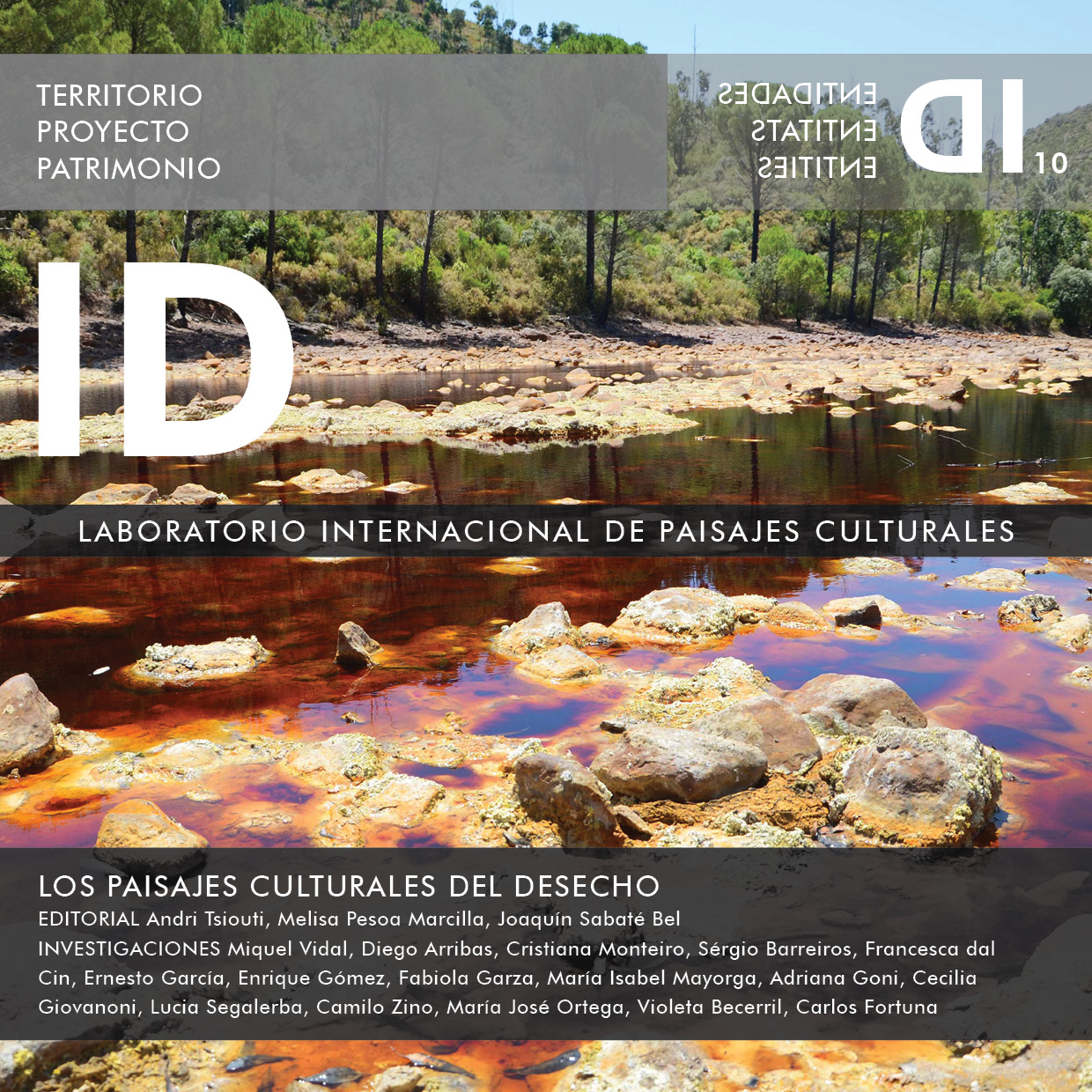EDITORIAL
Los paisajes culturales del desecho
DOI:
https://doi.org/10.5821/id.10837Abstract
El Laboratorio Internacional de Paisajes Culturales dedica este décimo número de la revista IDENTIDADES a los paisajes del desecho, una categoría particular de paisajes cotidianos y degradados, incluso contaminados, que suelen ser objeto de rechazo por sus connotaciones negativas en el territorio.
Desde los años 60 se detecta un creciente interés por estos paisajes del desecho, conocidos en la terminología internacional como waste landscapes, ya sean industriales, escombreras, minas a cielo abierto, vertederos u otros lugares profundamente alterados por la actividad humana. Durante mucho tiempo fueron rechazados, como símbolo de declive, pero recientemente empezamos a percibirlos con una mirada renovada y positiva, que reconoce en ellos valores singulares y de marcada identidad. Este aprecio crece de manera lenta y progresiva desde diferentes disciplinas, ya sea desde el arte, la arquitectura, el paisaje, el urbanismo, la geología, o la geografía. En contraste con perspectivas que ponen el énfasis en la capacidad destructiva de la intervención humana y reclaman corregir las alteraciones ocasionadas, esta nueva tendencia defiende la puesta en valor de estos espacios como testimonios de la interacción del hombre con su medio.
Downloads
Published
Issue
Section
License
Copyright (c) 2021 Creative Commons

This work is licensed under a Creative Commons Attribution-NonCommercial-ShareAlike 4.0 International License.
Those authors who have publications with this journal, accept the following terms:
a. Authors will retain their copyright and guarantee the journal the right of first publication of their work, which will be simultaneously subject to the Creative Commons CC BY-NC-ND-4.0 recognition license that allows third parties to share the work provided that its author and its first publication are indicated in this journal, but they cannot be changed or used commercially.
b. Authors may adopt other non-exclusive license agreements for the distribution of the version of the published work (eg: deposit it in an institutional telematic archive or publish it in a monographic volume) provided that the initial publication in this journal is indicated.
c. Authors are allowed and recommended to disseminate their work through the Internet (e.g. in institutional telematic files or on their website) before and during the submission process, which can lead to interesting exchanges and increase citations. of the published work. (See The effect of open access).













